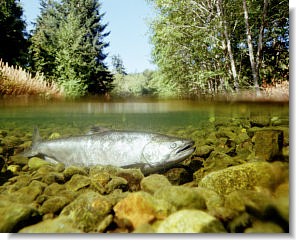Module 1 - Background to biodiversity
Overview of module 1
Background to biodiversity is divided into two major headings and several subheadings:
1. What is biological diversity?
- Economic importance of biodiversity
- Ecological importance of biodiversity
- Ethical or cultural importance of biodiversity
- Biodiversity in BC
- BC's biodiversity at risk
- How can we manage biodiversity?
2. Two approaches to forest management
- Ecosystem or coarse filter approach
- Specific-specific or fine filter approach
Learner outcomes
On completion of this module, you will be familiar with managing forests for biodiversity
- Describe biological diversity
- Discuss two approaches used in forest management
Pre-reading questions
The following questions will determine how much you already know about managing forests for biodiversity. It is suggested that you use a mind map to assist you in remembering. When you have completed the module, return to your mind map and add new facts or ideas, and change or modify those that may be incorrect or need to be updated. Use a different color of pen so it is obvious what you have added, modified, or changed. This is intended to be a positive experience.
- Define biodiversity
- What do you already know about biological diversity?
- Why is biodiversity important to BC?
- Economic value
- Ecological importance
- Ethical or culture significance
- Compare biodiversity in BC to another location outside of BC.
- How can the forest industry assist in maintaining BC's rich biodiversity?
- What do you already know about coarse filter approach?
- Describe the landscape level approach to biodiversity management.
- Explain the natural disturbance process
- Explain the stand level disturbance process - How do natural disturbances and stand level disturbances relate to the landscape level?
- Describe the fine filter approach.
- Compare the coarse filter and fine filter approaches (similarities and differences).
- Why are these two approaches important to forest management?
Background to biodiversity

Maintaining biological diversity is important for British Columbia's ecosystems.

